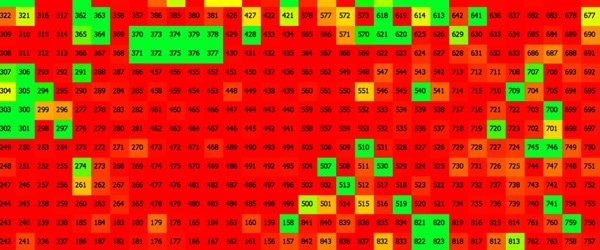The release of the iPad this week may bring the long-expected replacement of the paper-bound lab notebook by electronic notebooks one step closer. But are scientists, particularly PIs, comfortable with electronic lab notebooks?
The rise of the tablets
The concept of an electronic lab notebook isn’t anything new, and even the idea of implementing it on a tablet PC has been around for a while. However, as of six months ago, the only tablet PCs widely available were specialized laptops, with a swiveling touchscreen displays. The current crop of tablets, be it Apple’s iPad, Microsoft’s Courier, or any of the other offerings, brings us a lighter, cheaper, more ‘handle-able’ computer that many of us could see sitting beside us at the bench. The power of these machines is diminished compared to the specialized laptops, generally speaking, but still more than enough for the task. So will these technical advances usher in the demise of the paper notebook? It may depend on the software, and our expectations of it.
Physical versus electronic
The advantages of an electronic lab notebook are obvious:
- You can search them. The information that you want is somewhere in the dozen lab notebooks of your predecessor – who wouldn’t want Google to help them find it?
- You can copy them with the click of a button. Creating complete back-ups of paper notebooks is time consuming and laborious, which means it often doesn’t happen. Easy (or even transparent) back-ups of electronic lab notebooks allows storage of current copies off-site in case of disaster.
- They are legible. Do not underestimate this point!
- You can put some pieces of data in them that you just can’t put into a paper notebook. Current scientific data can take the form of movies or of an interactive, multidimentional interface (think genomic and proteomic data), that just can’t be taped into a paper notebook without the “loss” of data. (The data exists, just not in the notebook.)
- Did I mention that you can search them? Just think how powerful that could be.
The advantages of a paper notebook are fewer but significant:
- The book is a universal format. You can pick up a lab notebook from 1985 and read it. Try to read a 5½ inch floppy disk from 1985. Even if you pull the data off the disk, how many files from 1985 can still be read by today’s programs?
- Lawyers love them. A prebound, handwritten notebook, properly signed, dated, and witnessed, is the gold standard for defending patents or concerns of scientific misconduct. Even though many of the high-end electronic lab notebook programs sold to pharmaceutical companies go to great lengths to ensure the integrity of the data, having cracked versions of popular mainstream programs available weeks after their release undermines confidence in these claims, at least to the non-computer science crowd.
- They are cheap. No licenses to maintain, and no worries that the notebook will stop working if the lab has to go a year without funding.
Moving towards a universal format
Some of the electronic lab notebook programs out there have recognized that proprietary file formats worry scientists, and are moving towards more universal formats. The most popular choice seems to xHTML. This seems the logical choice – it can be read by many programs including the handful of web browsers out there. It can certainly handle images, movies, graphs, and even link to particular files when proprietary programs are required to look at the data (sequencing chromatograms, for example). And while it may evolve, the world is invested enough in it to give it the best chance of survival.
How rigorous do you need to be?
This may be controversial, but in an academic lab you may not be as worried about making patent lawyers happy as in industry. I know that academic labs patent things, and that rigorous dating and witnessing of lab notebooks can be important for other reasons, but the truth is that many labs are already violating these rules with their current paper-based system. Here is the range of paper-based notebook rigorousness that I’ve seen in academic labs:
- All lab notebooks used are prebound with numbered pages, any extraneous material (such as a picture or graph) is glued in, and all pages are signed and dated by the experimenter and a witness.
- All lab notebooks used are prebound with numbered pages, and any extraneous material is taped into the notebook. Dates are recorded for the experiments, but the pages are not signed or witnessed.
- Lab notebooks consist of binders, and experiments are recorded on pads of scientific paper, which are added page by page to the binder as they are used. Extraneous material may either be taped to the pages or may simply have holes punched into the edge and added directly to the binder.
Actually, I lied. Even though 1 is the most proper (rigorous) way to keep a lab notebook, I have never seen a lab that handled their notebooks this way. I’m certain there are some that do, but I haven’t seen it myself. I’ve seen some labs which function with system 2, and most that I’ve seen use system 3. System 3 works great, but only if you trust the scientist that created it. So if your lab is using a relaxed paper-based lab notebook system, do we really need to get caught up in this aspect of the security of the electronic lab notebook?
How does free sound?
With the introduction of the new tablets, developers are creating a number of programs that we haven’t really seen before: journaling programs. These programs, in broad brush-strokes, are intended for people to use to record their thoughts, insert images, and link to other files (or web pages). Do these parameters sound familiar? While they certainly don’t offer all the features of commercial electronic lab notebook programs, they do 95% of what most of us would want them to do, and they are essentially free. (If you want an example, check out this video.) Alternatively, with a little work you can use a program you’re already familiar with – Word or an equivalent – to set up your own HTML based electronic lab notebook. These programs would have the lowest form of dated security, consistent with system 3 described above, but you can’t beat the price.
I would love to hear your thoughts. Do any of you work in a lab that uses an electronic lab notebook? What system do you use, and how do you like them? How long do you think it will be before we are all using electronic lab notebooks?







